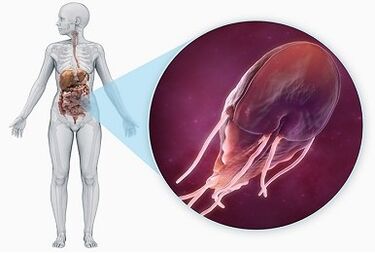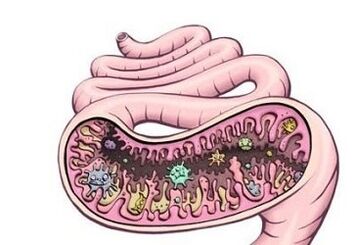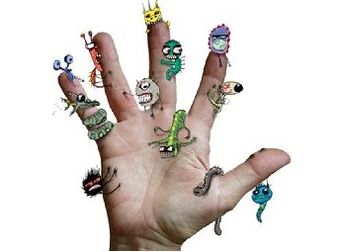Parasitism is such a form of inter -specific interaction, in which the representative of a type (parasite) partly or completely exists at the expense of a representative of a different type (owner). Taxonomic list of parasitic forms that affect a person is extremely extensive

Parasites can be found under arthropods, mollusks, worms, mushrooms, simple organisms and this is not the entire list. Pathrot bacteria and viruses from a medical point of view are also parasites.
In this article we will talk about parasitic forms of representatives of the Kingdom of Properties (protozoa). Parasites are always an unpleasant and undesirable phenomenon, so they need to know as much as possible about them.
Representatives of the kingdom are often referred to as individual organisms. These are creatures that consist only of a cell that has constant form, such as: B. Zil or cytoplasmic movements like amoebas.
Many protozoa are equipped with movement organs, which are shown in the form of flagella, zilia or pseudopods. Their dimensions fluctuate from microscopically to several millimeters. The organism cage contains an organlla set that performs functions similar to the organs of more complex organisms.
The kingdom is represented by almost 15 000 species, most of which live in water and soil environment.
However, there is a part of individual organisms that prefer a parasitic lifestyle. The simplest parasites of a person can cause disease such as protozoa - sometimes heavy shapes have to death. Sometimes it is very difficult to get rid of parasitically in the body.
Protozoa has a protective mechanism - the transfer of unwanted environmental conditions in an inactive state. The cell is covered with a dense, impenetrable shell, turns into cysts and can be very long in such a non -receptive shape. Incest is also used by the simplest to distribute.

The difference in the species
The simplest people of a person differ in the structure, the method of introducing them to the body and causing diseases. For the best structuring of information, the main material for individual organisms is briefly shown in the table.
Some representatives of the protozoa parasitize in the human body, their short description:
| Type, caused diseases and systems of organs that are subject to damage | Symptoms | Infection methods, carrier | Infect the stage of the parasite life cycle |
|---|---|---|---|
| The class is marked | |||
|
Skin leishmaniasis is characterized by the formation of necrotic ulcers on the affected areas of the skin. Viseral leishmaniasis causes acute inflammatory reactions from the affected organs with ulcers and bleeding. | They fall into the bloodstream with a bite of a mosquito with its saliva. Carrier - warm animals, including people; The wearer is a mosquito. | Promaous fats (flagellate body shape). |
|
Enteritis, allergies, asthma, depression, nerve disorders, cracks, dry skin, cholecystitis etc. | The faecal oral infection path through food and water. Carrier - warm animals, including people; Carrier - synanthropical insects (flies, cockroaches). | Stadium of the cysts. |
|
Itching, burning in the genital area, discomfort while urinating, plenty of unhealthy unloading of the genitals. Complications in the development of infertility are possible. | Sexual path of infection; through the mouth; through the rectum; In the air air; It is possible to transfer parasites from mother to child during the birth. One person is a person and a carrier. | Every stage of the life cycle: flagellate (adults), amöboid (medium, middle, most invasive), cyst. |
|
An increase in lymph nodes, pathological processes in the liver of the spleen, the damage to the nervous system is characterized by excessive drowsiness, and often a fatal result occurs. The disease develops up to two years. | Steps into the bloodstream with its saliva during the bite of the insect; Pour on the blood. The carrier is warm -flowered animals, including people, a wearer - a fly of tsech (African tripanosomosis), tritomic a bug (American tripanosomosis). | Trytomotigote stage (characteristic of the vibration of the membrane and the ability to move). |
| Spore class | |||
|
The latent and chronic form drives asymptomatic; The symptoms of an acute form are shown by the affected organs. The most dangerous for pregnant women and newborn children lead to serious disorders and congenital pathologies until the death of the fetus. | Fakal oral infection path through unprocessed milk, meat; With insect bites; During the pregnancy from mother to child. Hard animals and carriers are warm animals, including people. | Stadium of the cysts. |
|
An increase in body temperature, shaking frost, fever can lead to serious lesions of the kidneys, nervous system, a fatal result is possible. | Joins in a person's blood flow during a bite with a saliva of an insect; Transfer during pregnancy from mother to child; Pour on the blood. The wearer is a person, a carrier is a malaria mosquito. | Stadium of the sporosoites (the final form of the sexual cycle of the sporics). |
| Class of Infusory | |||
|
The ulcers of the mucosal membrane of the large intestine is associated with blood input, and there is often a fatal result. | The faecal oral infection path through fruit, vegetables, unprocessed pork. The wearer is a pig, a carrier - synanthropical insects (flies, cockroaches). | Stadium of the cysts. |
| Sarcodes class | |||
|
Asymptomatic and demonstrative form of the shape of the disease. The intestinal amöbiasis manifests itself through bloody diarrhea and vomiting; Extra fitted amöbesis is characterized by acute liver lesions, lungs and other organs. | Fakal oral infection path through vegetables, fruit, green; Anal sexual intercourse. The wearer is warm animals, mostly people, carriers - synanthropical insects (flies, cockroaches). | Stadium of the quad core cysts. |
As a rule, a very complex and multi -stage life cycle is characterized by a very complex and multi -stage life cycle, which includes different levels of activity and functional stages of the level.
Local cellular organisms most often occur through simple cell division into two parts, but some classes together with the division are also in a more complex reproduction process with the exchange of genetic information, such as representatives of the flagelle class.
In addition, life forms of protozoa are not universal for all classes. Different stages of the life cycle of parasites can take place in organisms from various animal species.

Some of them are constant owners, the parasite carrier, while others play the role of an infection company. In addition, individual phases of the life cycle can take place within the same individual, but in different organs.
The symptoms of the invasion depend on the stage of the parasite life cycle, the resistance of the human body, the degree of infection and localization. The disease is often accompanied by non -specific symptoms, with the diagnosis of infection with protozoa always extremely difficult.
According to the latest WHO data, more than 1 billion people are infected with parasites. The worst thing is that parasites are extremely difficult to recognize.
- Nervousness, weakness, drowsiness;
- Frequent headache;
- Itching, allergic reactions;
- Smell out of the mouth, plaque on teeth and language;
- Change of body weight;
- Diarrhea, constipation and pain in the stomach;
- Deterioration of chronic diseases.
All of these are possible signs of parasites in your body. Parasites are very dangerous, they can lead to fatal diseases. Diseases caused by parasites have a chronic form.




















